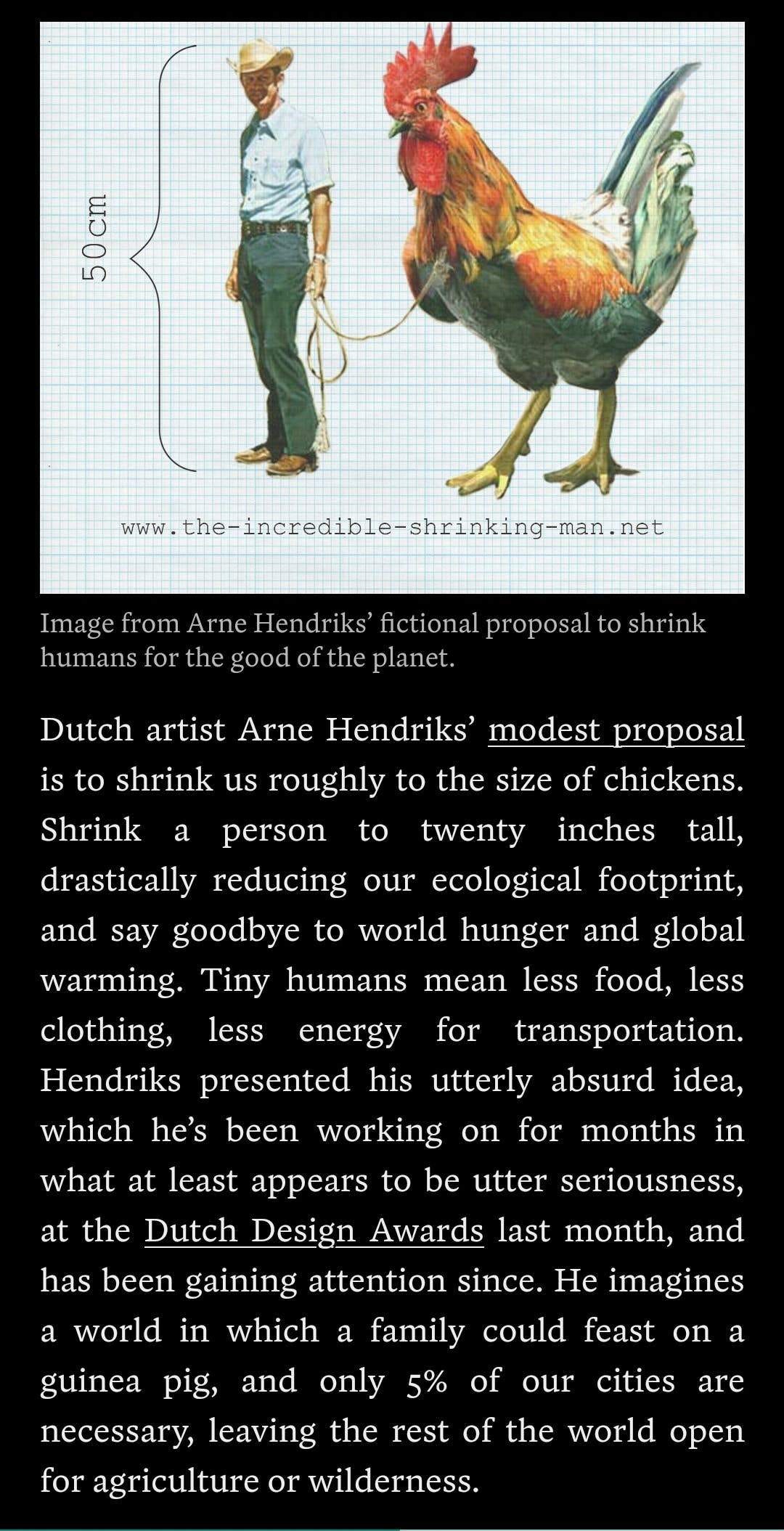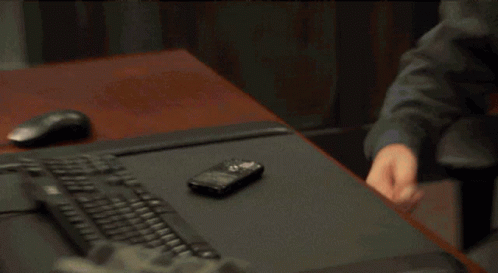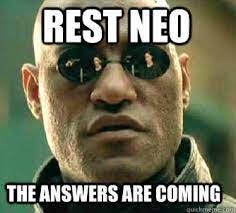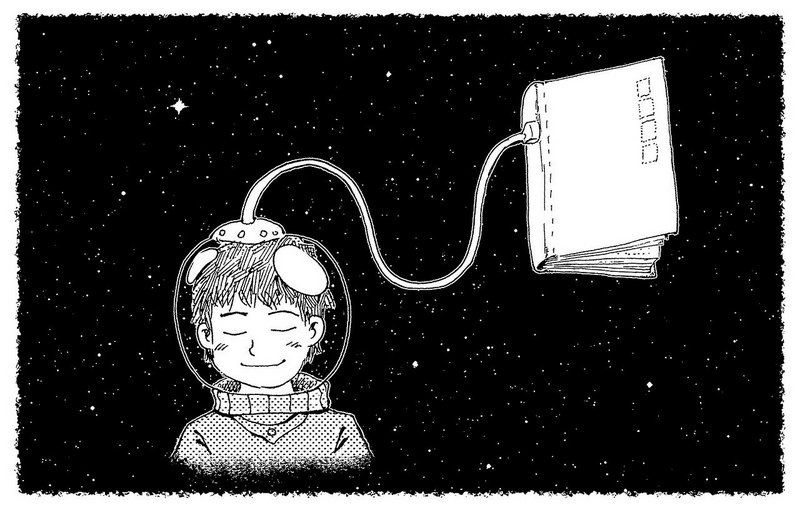Hi! This is Everything Is Amazing, a newsletter about science and curiosity, tiny islands and broken memories…
…and, as often as I can get away with, utter lunacy like this:
(On the official website of this “project,” Hendriks describes himself as “almost 2 meters tall but not too happy about it.” Definitely a man on a mission.)
But this is also a newsletter about taking fun things seriously - and since a few days ago I launched the Big Amazing Read, it’s worth pausing to consider the process by which we read things, re-running part of something I originally wrote in 2021.
(Long-time readers: you may recognise some of what follows - sorry for the echo.)
Fellow Substacker Elle Griffin recently stirred things up with a piece provocatively titled “No one buys books,” based on her reading of Penguin Random House’s attempted acquisition of Simon & Schuster in 2022. She’s since had some strong push-back on her conclusions, including in Lincoln Michel’s “Yes, People Do Buy Books,” expanded for Slate here. There’s lots to learn on this topic, and since I haven’t done all my reading yet, I’m definitely the wrong person to ask about this stuff.
(That said, I do remember that there were a record-breaking number of books sold in the UK in 2022, so if that’s indicative as a whole, however this pie gets divided up in practice it is still a VERY VERY BIG PIE - and I hope that’s what new authors focus on, whether they’re taking a ‘traditional’ or a self-published route or some new approach I’m probably too old to understand. Keep calm and write on, kids.)
But as for reading - how are we all doing? Because I’ll happily tell you, my ability to keep up with everything (newsletters, science papers, books, audiobooks, emails, cease & desist letters from people I mention in this newsletter) is a constant challenge. It’s certainly one I’m grateful for, because it reminds me that part of my job now is to read things for a living (pinch me!) and I’ll never not be grateful for that - but it’s still a lot.
How do you manage?
And do you have an ever-present urge to do this to your phone?
Firstly, thanks for reading, because let’s face it, email is exhausting.
I really do mean that. It should feel marvellous, but…here we are. (And it’s been years since I worked in an organisation! I probably have no idea how much worse it’s got with all those CCs and so on.)
There’s still a side to emailing that I love. I have good friends I occasionally write long, rambling emails to, the kind
is talking about here:

Now, you’d have to ask my friends if they enjoy receiving them. I’m too scared to do so. But writing them - that’s great for my mood and good for my soul, every single time.
It’s like those moments in the real world where you’re both sat comfortably and the sun’s high and the beer’s cold, and you just talk and talk, and suddenly it’s Wednesday. Or October. Whatever happens to the time in those moments, that is surely part of living a really good life. In so many ways, it’s what time should be for.
But with email, there’s also the Sisyphean grind of mucking out your Inbox every day, of “processing” rather than enjoying. Or you just give up, and start treating it like an informational landfill.
In doing so, you miss everything - and the rot sets in. Friendly messages from people you’d like to know better go unanswered, and start to gather a weight of guilt and self-loathing that make them impossible to respond to without a 5,000 word apology that would even make Cheryl Strayed break out in a cold sweat…
But this is why Email Debt Forgiveness Day was invented! A yearly chance to pluck social redemption from the jaws of unending horror.
Here are the rules from the official page for it:
On September 30th:
Dig out the email you’ve been avoiding
Write a reply, ignoring the amount of time that has lapsed
Add a link to this page, you can even use this email template
Send and enjoy your anxiety-free day.
Listen to this episode of the podcast Reply All for the details.
Unfortunately, part of the problem here is reading anything online. Take this newsletter. Quite a lot of you aren’t reading this paragraph. Based on previous open rates, I reckon maybe 40-50% of you are here (although thanks to a recent Apple Mail update, that’s going to get much harder for me to confirm in the future).
You might not stick around for long, though! According to a Nielsen Norman Group study in 2006, the average time that people read individual emails is 51 seconds. (I very much doubt it’s improved dramatically since then.)
Since most of us read about 200 words every minute…well, over half of you are gone now. 😢😢😢
But it’s incredible that any of you are reading - hopefully not because this newsletter is unusually rubbish, but because reading itself is such a miraculous dance of sensory mechanics.
Take the following statement:
Apparently one in three Britons are conceived in an IKEA bed, which is crazy if you think about it because those places are really well lit.
(Joke credit: Mark Smith at the Edinburgh Fringe.)
Okay. If I asked you to describe the experience of reading that line, you’d probably say your eyes smoothly moved from left to right.
But they didn’t. That’s not how we read at all.
Reading is actually about two things, and the first is jumping.
Your gaze leaps from place to place incredibly fast, an unending string of tiny hops - on average, less than a fifth of a second per jump.
(Try it. Look around you right now. Hop-hop-hop-hop-hop...)
These are called saccades - tiny movements caused by the squeezing and tugging of muscles in your eye. They’re astounding complex, not just because of the speed of them (which is startling) but because somehow, your eye always knows where to look next. It’s plotting future leaps and turning those intentions into the electrical signals required to twist those muscles in just the right way to point your eye just so. Again and again and again. In other words, what we call “looking” is really a vast network of visual systems working together at unbelievable speed to…
Sorry. Carriage return. I felt that paragraph was getting too big. Your brain hates enormous unbroken blocks of text unless they’re beautifully crafted, and I have no illusions about my work here.
(I also hope it hates those emails where every sentence is its own paragraph, aptly nicknamed “broetry” - hat-tip to my friend
for making me aware of it.)Anyway. Saccades aren’t where you do your reading. They’re just the bits in between reading.
During a saccade, your brain stops processing signals coming from your eyes, essentially switching them to standby mode. If they didn’t, your vision would be an overwhelmed smeary mess, an unending, pulsating Jackson Pollock of a thing that would drive you completely potty in minutes.
Very sensibly, your brain fudges this process, giving you the appearance of awareness while only collecting an undetailed “gist” of a glance to work with. It’s similar to how a Thatcherised Adele can play tricks on you.
In fact, almost all of the “seeing” part of reading only happens when your eyes stop. There’s only a ridiculously small part of your vision that’s capable of actual reading.
Hold your arm out in front of you, and do a thumbs-up. Your thumbnail? That’s the size of it. It ain’t big.
It’s called the fovea centralis, and it’s part of your retina. It’s tiny - and yet it’s the only place where you see with 20/20 vision (if you’re lucky to have such a thing), and can distinguish fine colour and detail. Nowhere else can do this.
I say again: it’s incredible that you can read anything.
Well, whatever. You’re getting bored now. My bad.
That nice picture helps (cat!!!!), but if you wanted a science lecture, you would have watched something by Professor Brian Cox, who also has really great hair. It’s been minutes since you checked your email. Are we done here?
Bear with me, my young Padawan. Look, here is a pop-culture meme to lazily manipulate your emotions:
Do you remember the good old days where you could grab a paperback after dinner and curl up on the sofa, and you read until bedtime but couldn’t stop, and then you turn the last page and it’s daylight and there’s a voicemail saying you’ve been either expelled or fired?
Those days were the best. Ahh. But then the Internet came along, and apparently we now have the attention spans of goldfish…
OK, no. Hold on. I know the study you’re thinking of.
It was referenced absolutely everywhere a few years ago - released by the Consumer Insights team at Microsoft Canada, and quickly announced as fact in lots of credible publications. (Look, it’s in Time magazine!)
Then BBC reporter Simon Maybin asked what should have been an obvious question: um, how did Microsoft actually measure this?
(This is called “fact-checking,” and it used to be all the rage in pre-Internet times.)
While the bulk of the report concerned a study of the brain activity of 2,000 Canadians, the “sub-goldfish attention span” statistic came from a company called Statistic Brain.
“A quick Google and it is easy to find where they got it from. The Statistic Brain website looks pretty trustworthy too. It even says they "love numbers, their purity, and what they represent"…
As if to prove it, the number-lovers at Statistic Brain source all their figures. But the sources are infuriatingly vague.
And when I contact the listed sources - the National Center for Biotechnology Information at the US National Library of Medicine, and the Associated Press - neither can find any record of research that backs up the stats.
My attempts to contact Statistic Brain came to nothing too.
I have spoken to various people who dedicate their working lives to studying human attention and they have no idea where the numbers come from either.”
Technology Strategist Faris Yakob did more digging:
“A reverse image search led me to the source of the claim, a software manual called Building Information Modeling and Construction Management. Here the chart is sourced to the National Center for Biotechnology Information and US Library of Medicine but when asked, both denied any knowledge of research that supports it.”
If that wasn’t bad enough, here’s the clincher: goldfish don’t seem to have short attention spans. It’s a myth. There are umpteen studies suggesting as such, going back decades. This is even something a schoolkid can confirm. I know this because I found this award-winning study by 9th-grader Katie (no surname given) for the American Museum of Natural History, which logically and rigorously concluded that goldfish retain a practical spatial map of their surroundings for at least 6 months.
Alas, there’s plenty of other trustworthy research suggesting our attention spans are indeed changing, like this fascinating research on the ‘half-life’ of the popularity of topics in online media.
But this is beside the point. Whatever the science is, paying attention to words online and offline can just feel hard. Anecdotally, I haven’t met anyone who hasn’t struggled with it.
(You may feel wonderfully, alarmingly seen from reading
’s experience of losing her ability to read during the pandemic.)Faced with that kind of pressure, how does anyone keep up?
Here’s something online-specific that works for me. It revolves around one simple but seemingly nonsensical clickbait-like statement:
It Is Impossible To Read Anything Online.
By “impossible”, I really mean “extremely hard, for me and many other people” (because, ahem, this is how we feckless please-click-my-headline copywriters operate, turning subjective semi-opinion into hyperbolic statements like that).
By “read,” I mean anything over, say, 250 words.
And by “online,” I mean on a device that is currently connected to the Internet.
As well as a ne’er-do-well copywriter, I am also a professional Internet-based dopamine addict. Even if I’m not actively using it, knowing my phone or browser could have an onscreen notification that (allegedly) requires my attention is enough to distract me towards it. I’ve timed it. This urge frequently kicks in after less than 30 seconds.
Unless you really are Neo in The Matrix, that’s not enough time to read a book. It’s not enough time to read an article. It’s barely enough time to read a tweet.
My attention is tugged away - and when I bring it back, my thoughts have to start all over again. This happens maybe a hundred times every hour. (I used to think this was merely an occupational hazard. I was kidding myself.)
The solution is nicely dumb: I just read everything offline.
My laptop’s F2 key disconnects it from the house network. If I want to really read and think about something, I press that button, and do the same to my phone with Airplane Mode. Zero internet!
It may seem an inconsequential act, but I’m teaching my subconscious to know when I’m fully offline, while also creating a tiny but tangible obstacle that I have to hurdle to get connected again. It’s not much! Hardly anything. But it seems my brain knows - because it’s helping. I’m leaning in for longer.
But by far the most impactful thing I do is click the browser plugin button that bundles up all the words on screen and sends them to my Pocket account.
You could use Instapaper for this, with the bonus that it’ll sync with a Kindle. Or you could use one of the new crop of read-later apps - or something like Sublime, designed to capture online chunks of text for later reading and thinking-about.
But however you do it, get your reading brain away from an open Internet connection, into a place where you know nothing virtual is going to distract you or interrupt you. It’s like browsing the Internet is the saccade - and going offline is using your fovea to zoom in and actually see what you’ve found.
In my case, Pocket is where I send all the articles, many newsletters and a fair few emails that I want to read. (Bonus for researchers of all kinds: it creates a paper-trail as you go.)
Your dopamine-craving brain may fight like hell at first. It’ll need training. But if you persist, you might find these are little changes that make a huge difference for your ability to read without interrupting yourself, as they’re doing for mine right now.
Hope that helps.
Join me for the first EiA Big Amazing Read, where we’re spending three months diving into a single book in search of its biggest, chewiest ideas.
Everyone can join in - but if you’re a paid subscriber, you’ll get the chance to have a deeper and wider experience of each book we’re reading together, and you’ll even have the chance to hang out with my good/terrible self and other readers in (virtual) person.
To that end, I’m now running an introductory 20% discount for all new paid subscriptions:
Cheers!
Images: Sam Burriss, Bacila Vlad, 愚木混株cdd20; Andrew Valdivia.









Reading off line seems like it makes a ton of sense. I also need to work off line, but I'm terrible at that.
As for books, I read so much less than I used to BUT I just finished Tana French's latest -- The Hunter -- and I got so sucked in I actually stayed up late to read it, which I haven't done in years.
Really enjoyed this article and persisted to keep my attention and get through reading the whole article actually! Quite amazing